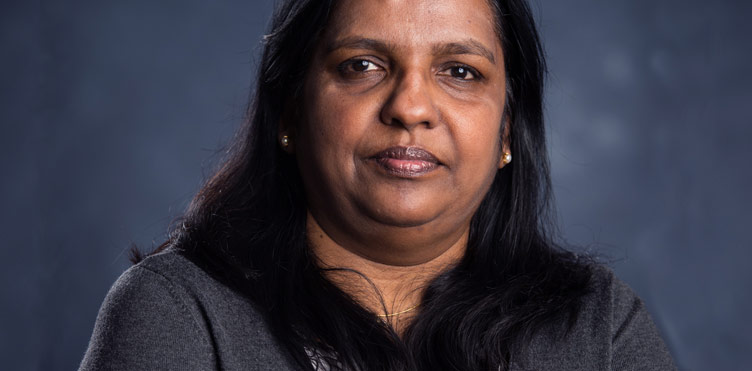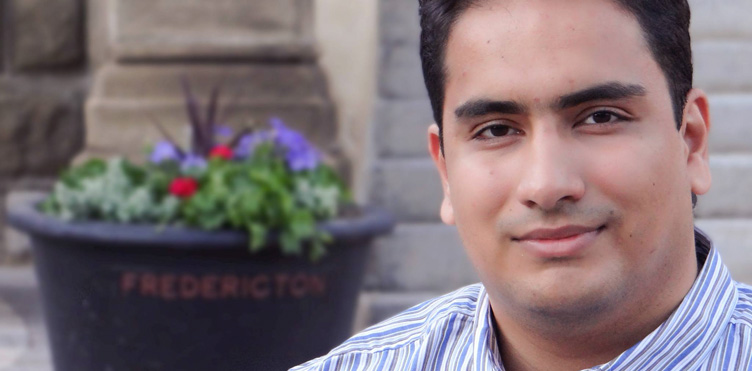
What if you could stop a senior citizen’s fall before it happened? Or predict a disease in its early stages? Janet Light, a professor of computer science at UNB Saint John, is developing technologies that could do just that.
Dr. Light and her team of undergraduate and graduate students are working on a fall detection device and algorithm that will forewarn of falls in Alzheimer patients, as well as a technology platform that could help detect emerging health problems.
On fall detection, they have developed two systems – the first uses an accelerometer to measure acceleration while the second employs an electrocardiogram band to monitor heart rate. These, along with motion sensors, smart cameras, bed sensors and shoe sensors, all non-invasive and almost invisible to the user, have been used in a fall detection study on Alzheimer patients at a New Brunswick nursing home.
The data collected from these sensors is sent wirelessly to servers where it is analyzed using a machine learning algorithm that is able to detect any anomalies. Caregivers, who are connected to the same system as patients, receive alerts through the system or to their portable device, when an anomaly is detected.
The staff at the nursing home often ask Dr. Light how quickly these predictions can be made. How quickly can she predict a fall? How quickly can she predict a disease?
“With newer models and with newer methods we are trying to predict quickly as well as more accurately so that we can prevent those incidents,” she says.

Doctoral student Alireza Manashty is developing an innovative cloud services framework to help these health monitoring systems work together, enabling detection and prediction in near real time speed. He was awarded a $20,000 research grant from Microsoft to develop and test his framework within the tech giant’s cloud services.
“The solution is called HEAL – Healthcare Event Aggregation Lab,” he says. “It aims to connect different systems together in order to aggregate different health signals and help predict healthcare anomalies.”
This technology will enable Dr. Light and her team to analyze daily anomalies and lifestyle routines, detecting patterns that could lead to disease in the future. Early detection allows the user to modify their lifestyle, possibly preventing future health problems.
HEAL will also have the capability to analyze the daily routines of people living with certain diseases, enabling them to match health patterns with those they are regularly monitoring. Finding a match may lead to predicting a disease.
In 2015, Uman Yadav, an electronics and communication engineering student from Surat, India, was brought onboard, thanks to the Mitacs Globalink Research Internship program, which connects universities and businesses with skilled undergraduate and graduate students from around the world.
These are smart kids, says Dr. Light. They come to UNB for 16 weeks and help my research team with development testing and field testing.
Mr. Yadav worked closely with Mr. Manashty to develop the platform and predictive models.
Such a system provides the potential to curb traumatic incidents, as well as improve the quality of life for many senior citizens.